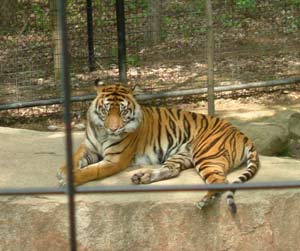In Zoos, Many Animals Find It Harder to Reproduce Than in the Wild. Why Is That?
 |
| Tigers in zoos have a hard time mating due to limited space (Photo: aredarmy) |
From birth, animals have lived in vast, colorful natural environments, and they are accustomed to their wild habitats. When placed in a zoo, although the living conditions are good and there are no immediate dangers, these animals struggle to adapt, which negatively impacts their reproduction.
For example, tigers require a relatively spacious area to mate, but the confined space of a zoo hampers their reproductive success. Many bird species, during their breeding season, need male birds to attract females with their beautiful plumage, often by “performing a dance.” However, once in a zoo, they become “silent and colorless.” Some bird species thrive in quiet environments, but in the noisy atmosphere of a zoo, they lose that advantage. Numerous animals, once brought into a zoo, do not develop properly and are unable to reproduce even until death.
Therefore, no matter how dedicated the zoo staff may be, it remains challenging for some rare species to breed successfully. As a result, wildlife conservationists and environmentalists around the world are making significant efforts to create wild-like environments within zoos to help preserve the species of these rare animals.


















































